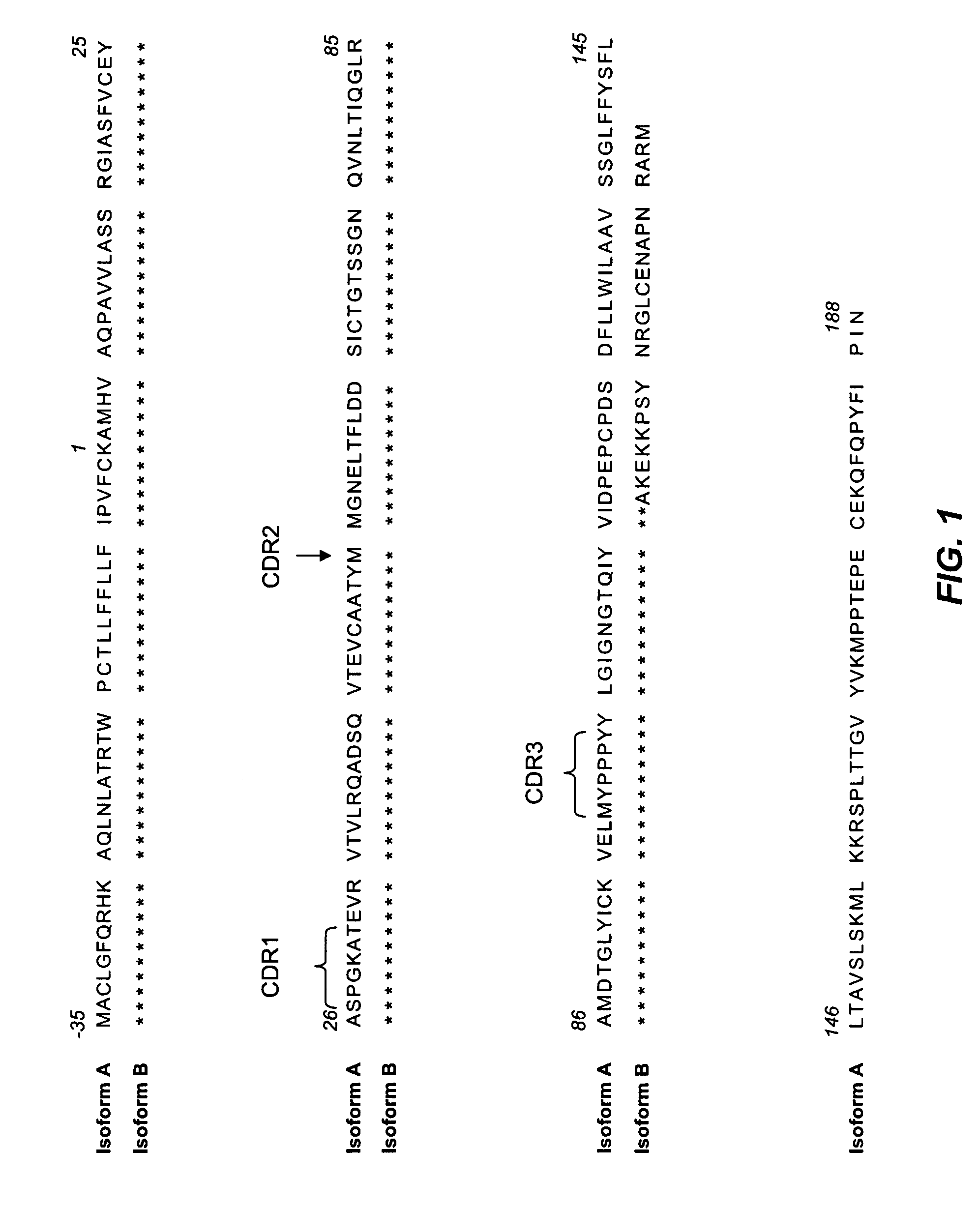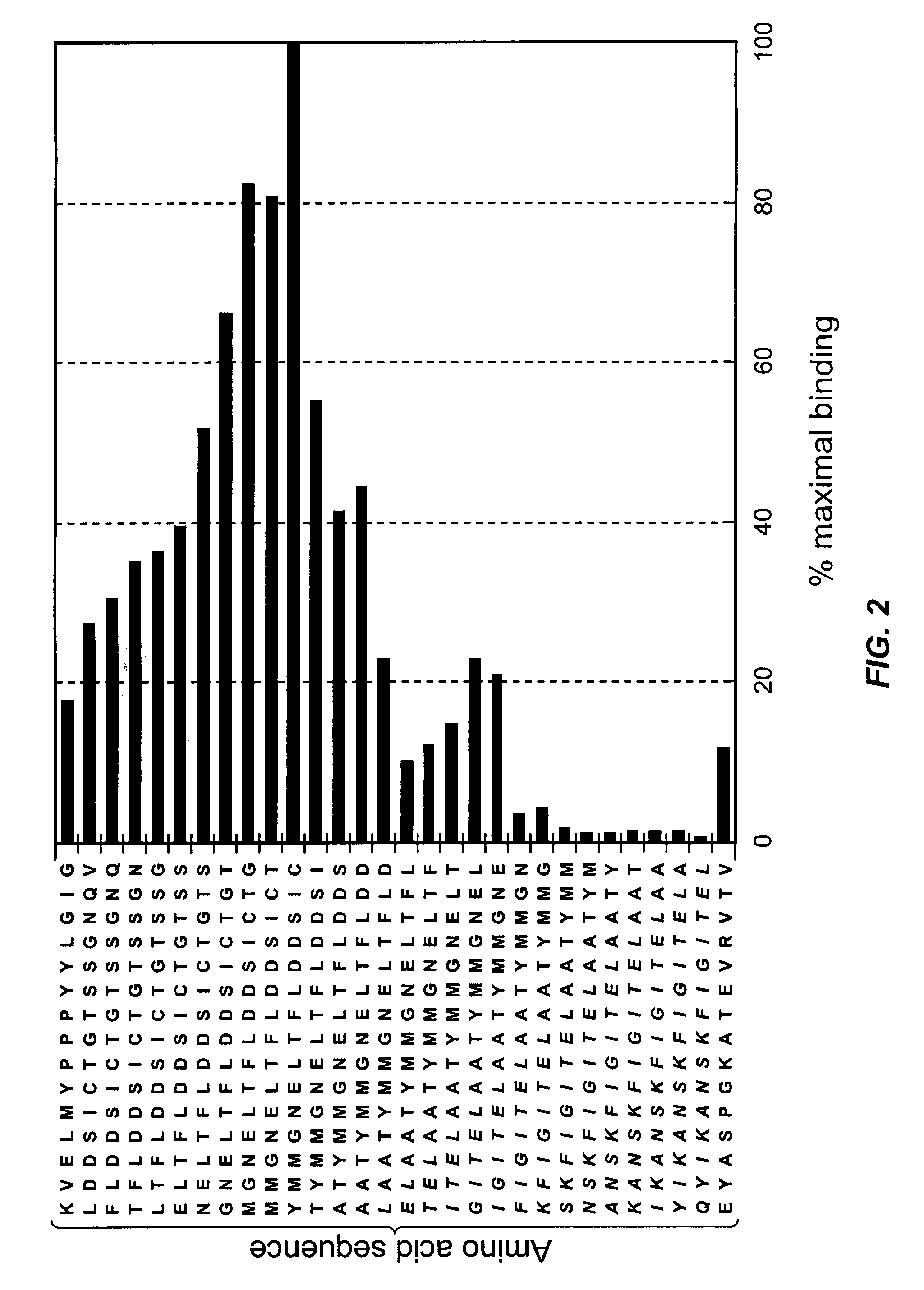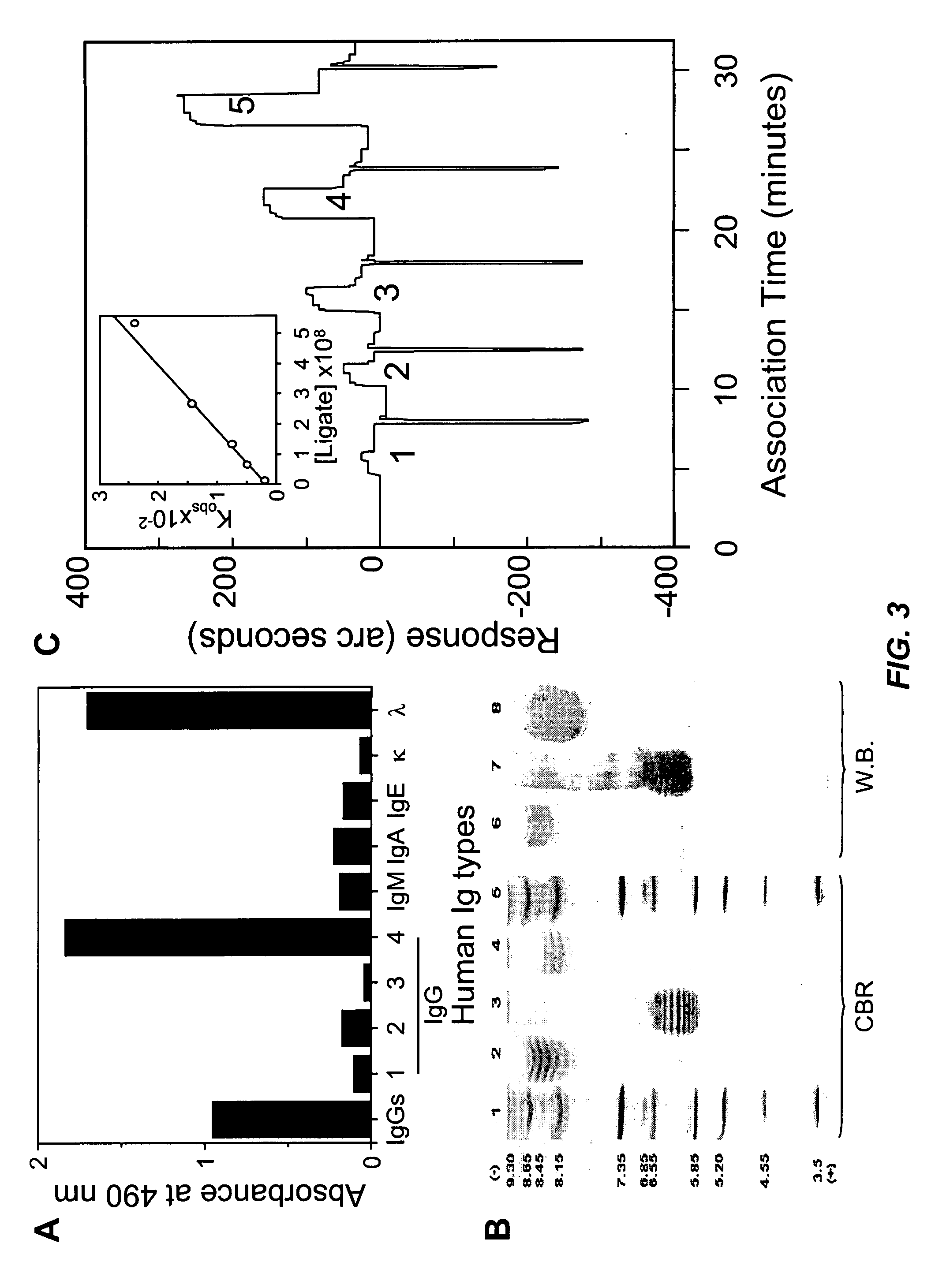Complete human monoclonal IgG4lambda specific for CTLA-4 and uses thereof for detection of soluble CTLA-4 and isolation of regulatory cells
- Summary
- Abstract
- Description
- Claims
- Application Information
AI Technical Summary
Benefits of technology
Problems solved by technology
Method used
Image
Examples
example 1
Characterization of Anti-Human CTLA-4 mAb
a) Epitope Mapping
[0144]To characterize the nature of complete human mAb binding, epitope mapping was performed by the Western blotting method with arrays containing the overlapping pendecapeptides, encompassing CDR1-like (the B-C loop), CDR3-like (the F-G loop) and the Met 55-cored sequence localized between the C′ and D strands of the CD152 extracellular portion. FIG. 2 depicts that only the peptide corresponding to the C-terminus of the Met 55-cored sequence (54 YMMGNELTFLDDSIC68; SEQ ID NO:1) was best recognized by the mAb, and thus representing the epitope, while neither the promiscuous T-cell epitope used to boost in vitro stimulation, nor CDR1-like or CDR3-like region contributes to the binding. From this result, it can be concluded that the Ala 51, Ala 52, Thr 53 and Thr 69 are not essential for mAb recognition.
b) Immunological and Biochemical Natures of the mAb
[0145]The essentially pure mAb was isotyped and subtyped by solid phase EL...
example 2
Using CDR2-Specific Agent Increase the Detection Limits of Human CTLA-4
[0147]In practice, immunoassays based on the use of pairs of blocking Abs, which reactive with epitopes within the B7-binding region of the molecule; confront a primary limitation of steric hindrance. Blocking Abs may compete with each other and with endogenous CD80 and CD86 for the restricted CDR1- and CDR3-like regions, making them difficult to distinguish native sCTLA-4 in an assay system. To determine whether the above CTLA-4 binding synergism with the natural ligand CD80 displayed by the mAb may contribute a lower sensitivity; the mAb was coupled with CD80 in detecting sCTLA-4. In brief, the ELISA system utilizing the IgG4λ-coated plate for capture and biotinylated CD80-muIg recombinant protein (Ancell) for detection, followed by streptavidin-peroxidase for color reaction. FIG. 5 shows a representative experiment. This combination predominantly resolves a range of CTLA-4 from 0.39 to 50 ng / ml, while the bloc...
example 3
Isolation of the Intrinsic CTLA-4+ Populations Resulted in Increased Foxp3 Expression and Suppression
[0148]One of the major unresolved problems in the field of using Tregs as a promising alternative to the standard immunosuppression regime is how to develop a reliable method for their isolation. Most prior arts reported to date exploit a negative selection non-CD4+ cells and a positive selection CD25+ cells, which is time-consuming and experience-dependent to manipulate human PBMC. However, having acknowledged the importance of CTLA-4 in Treg's function (Read, et al., 2006; Ward and Barker, 2007), the present invention turned the attention to utilize intrinsic CTLA-4 surface expression for Treg isolation. In particular, we asked if the non-blocking anti-CTLA-4 mAb provides a single positive selection for Teg cells. To address this question, we employed a thymidine incorporation assay to detect the suppression of built-in Tregs and the enhancement of Treg removal.
[0149]By analyzing t...
PUM
| Property | Measurement | Unit |
|---|---|---|
| Content | aaaaa | aaaaa |
| Immunogenicity | aaaaa | aaaaa |
Abstract
Description
Claims
Application Information
 Login to view more
Login to view more - R&D Engineer
- R&D Manager
- IP Professional
- Industry Leading Data Capabilities
- Powerful AI technology
- Patent DNA Extraction
Browse by: Latest US Patents, China's latest patents, Technical Efficacy Thesaurus, Application Domain, Technology Topic.
© 2024 PatSnap. All rights reserved.Legal|Privacy policy|Modern Slavery Act Transparency Statement|Sitemap



